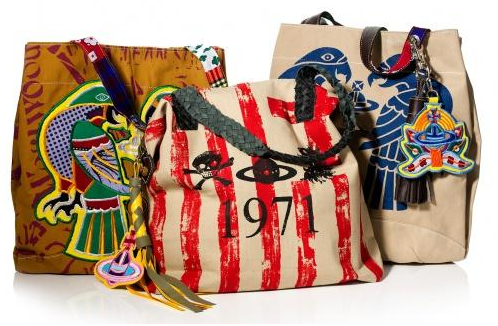Vivienne Westwood, a legendary British designer, philanthropist, and political activist, has supported responsible consumption for more than a decade. The designer has repeatedly mentioned that working for the sake of quantity, not quality, does not suit her (Our approach, n. d.). As a result, she has gradually transformed her brand through the use of recycled or environmentally friendly fabrics, as well as ecologically sustainable production methods.
Vivien uses organic cotton and linen in her collections to create T-shirts, hoodies, trousers, and bamboo fibers to produce shirts. At the same time, one may also find a jacquard fabric obtained as a result of cellulose acetate from wood fiber within the framework of the forest restoration program. In addition, in 2011, Westwood issued a collection of purses named Ethical Fashion Africa (Vivienne Westwood launches, 2020). The designer provided many Kenyan citizens with workplaces that used canvas tents and road signs for creating purse designs (Vivienne Westwood launches, 2020). This project aimed to influence fashion on three levels: social, economic, and environmental.

Westwood abandoned the idea of fashion shows and dancers. Instead, the collection was presented with the aim to show that wearing less is better (Top 13 sustainable fashion designers, n. d.). In addition, Westwood once again tries to convey to society the idea that quality is much more important than quantity. Having reduced the number of items in the collection, Westwood focused on the following fabrics: biodegradable cotton, linen, and viscose. Moreover, the designer started selling steel water bottles as part of the fight against plastic pollution of the world’s oceans and the battle for the conservation of water resources on the planet. Vivienne Westwood continues to inspire new generations of designers who are passionate about taking care of the earth.
References
Top 13 sustainable fashion designers making a change in 2020. (n. d.). Motif.
Vivienne Westwood launches a sustainability initiative. (2020). Real Leather.
Our approach. (n. d.). Vivienne Westwood.